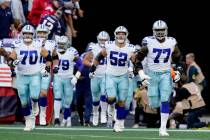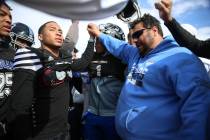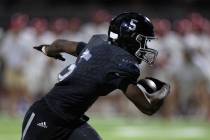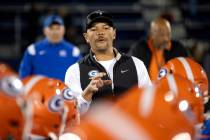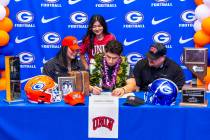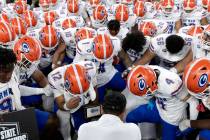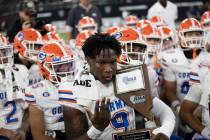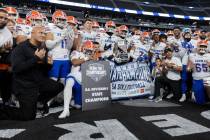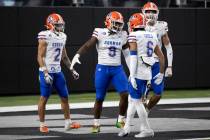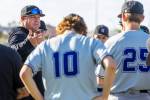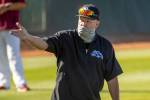Prep football teams tackle the heat
A national heat wave has already contributed to six deaths on high school football practice fields this year — the most in one season since 2006, according to the National Center for Catastrophic Sports Injury.
As noncontact football practices officially opened for Clark County School District schools on Thursday, summer heat was a concern, but not the major issue it has been elsewhere.
Local coaches and athletic trainers attribute winning the battle against the thermometer — which sits at triple digits in August — to factors such as a lack of humidity, summer conditioning programs and proper hydration methods.
Palo Verde began its summer workouts a week after graduation, which helps coach Darwin Rost keep practices shorter and athletes out of the sun in August.
“I’m a firm believer in 1½- to two-hour practices,” Rost said. “We’re off the field after two hours.”
Summer conditioning is well-stocked with water and sports drinks, too.
“It’s not such a shock to the system when they get to this point of the year,” Del Sol coach Preston Goroff said. “Then we hydrate our kids often and try to make it every 10 minutes to get a water break.”
Once full practices begin, most schools practice early in the morning and again in the evening, leaving the players off the field during the day’s hottest hours. Palo Verde, for instance, practices at 7 a.m. and 6 p.m.
With an opening game Aug. 26 at Canyon Springs, the Panthers won’t even start school before jumping into the football season. As such, the next two weeks should be less two-a-day conditioning and more game preparation, Rost said.
“I believe that we’re in game week that week, and we treat it just like a game week, as if we had school that day,” Rost said. “When you have kids (practicing twice daily late), the kids get so burnt out by the time there’s a game that they can’t play.”
The Nevada Interscholastic Activities Association does not issue formal guidelines, but heat illness precautions are covered in the mandatory Nevada Education Coaching Program.
The National Athletic Trainers’ Association has guidelines to acclimate athletes that include no more than one daily practice for the first five days and no more than three hours of total practice each day.
The first two days also would be either free of padding or helmets-only, with full equipment and contact beginning the sixth day. The organization also strongly recommends an athletic trainer on site at all times.
Such national suggestions are often directed toward states with humid weather and higher heat indexes than Nevada. The Silver State boasts low humidity and less heat stroke because of it, said Cimarron-Memorial athletic trainer Jim Porter.
“Back East, you may only have three days of 100-degree temperatures, and then it goes back up and down,” said Porter, who has worked with local programs for 13 years. “Here, we basically know what the (weather) will be every day. It’s kind of boring to be a weather forecaster.”
While heat stroke is rare, heat exhaustion is prevalent in the desert. Heat exhaustion is a failure to replenish large amounts of lost water and salt, which might lead to limited sweating. It can be easily overcome if monitored appropriately.
“If you catch it early, you can just grab the kid and take him in the (air-conditioned) locker room,” Porter said. “He may miss two or three days of practice, but he will probably come back and play, if he wants to.”
Heat stroke is the body’s inability to cool itself, with potential internal temperatures so high that organs begin to shut down. Afflicted athletes must be submerged in cold water within 30 minutes or they could face potentially fatal consequences.
Poor diet and excess weight can increase the sudden onset of heat illness. One issue is the consumption of highly caffeinated energy drinks before practice.
“The combination of caffeine and sugar causes a significant spike in blood sugar, and they don’t function well in heat,” Porter said. “It takes fluid from the muscles and pushes it into the kidneys. We see lots of muscle cramping and lots of heat exhaustion (because of energy drinks).”
Players should know when they need a break, and coaches can educate them on how to take care of their bodies.
“If a kid’s tired, we tell them to tap their helmet so they can come out and get hydrated,” said Goroff, who posts nutrition guidelines on Del Sol’s website. “But it’s just like anything else: You condition yourself to go a little bit longer without.”
The NFL’s elimination of two-a-day practices might lead to similar changes at lower levels.
“The reason why we had two-a-days was because no one did anything during the summertime,” Goroff said. “When we got those kids, we had to get those kids in shape super-fast.
“Now, a lot of the teams are going through the summer and keeping those kids in shape, and therefore they don’t need to hammer those kids as hard in the beginning.”








